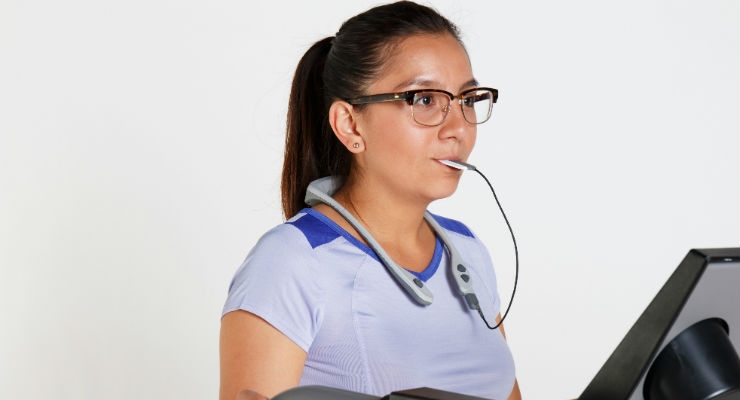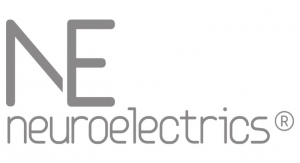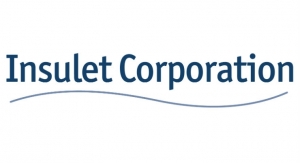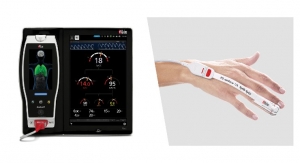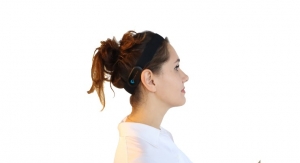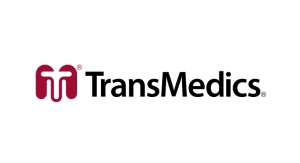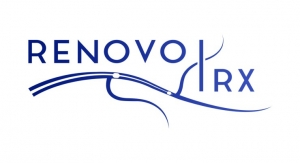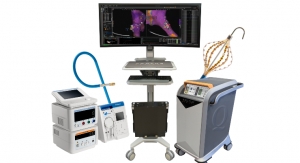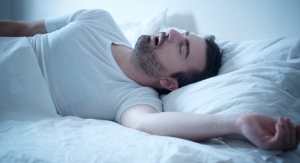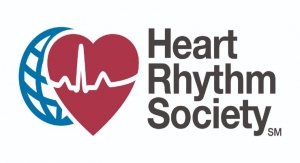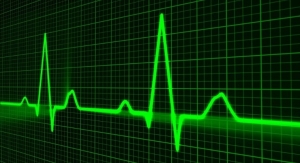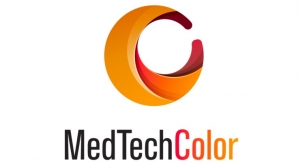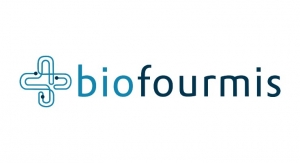Globe Newswire11.22.17
Helius Medical Technologies Inc., a medical technology company focused on neurological wellness, announced results from its registrational trial evaluating the safety and effectiveness of the Portable Neuromodulation Stimulator (PoNS) for the treatment of subjects with chronic balance deficits due to mild-to-moderate TBI.
The multi-center registrational trial titled, A double-blind, randomized, sham-controlled study of the safety and effectiveness of the Portable Neuromodulation Stimulator (PoNS) 4.0 device for cranial nerve noninvasive neuromodulation (CN-NINM) training in subjects with a chronic balance deficit due to mild-to-moderate traumatic brain injury (TBI), evaluated a total of 122 randomized subjects (61 active and 61 control). Subjects, age 18 to 65, received 5 weeks of treatment (2 weeks in-clinic and 3 weeks at-home) consisting of physical therapy and either a high-frequency PoNS device (active) or a low-frequency PoNS device (control).
Endpoints for effectiveness were assessed using the Sensory Organization Test (SOT), measuring balance using computerized dynamic posturography. A responder rate analysis was used for the primary endpoint. A responder was defined as a subject with an improvement of at least 15 points on the composite SOT score compared to baseline after 5 weeks of PoNS Therapy.
Secondary effectiveness endpoints were contingent on the outcome of the primary endpoint and determining the clinical effectiveness of the low-frequency device. As the low-frequency device demonstrated, on average, statistically significant improvements on composite SOT scores compared to baseline (p<0.025)—the secondary effectiveness endpoints evaluated for the study were the mean change in composite SOT score from baseline at 2 and 5 weeks, for both arms combined.
Endpoints for safety were assessed by frequency of falls, frequency of headaches, and Adverse Events (AEs). Falls and headaches were measured by daily activity logs and the Headache Disability Index, respectively.
Study results highlights:
“We are very pleased with the findings from our registrational trial that demonstrate that PoNS Therapy, deployed independently across our seven study sites, produced statistically significant improvements in balance from baseline, on average over three times the clinically significant amount,” said Dr. Jonathan Sackier, Helius’ chief medical officer. “Achieving the safety endpoints and further growing a positive safety profile continues to build confidence in our technology. With an underserved patient population waiting for improved treatment opportunities, we are eager to move forward with our applications for clearance with the U.S. Food and Drug Administration (FDA) and other foreign regulatory bodies.”
TBI is a serious public health problem in the United States, according to the U.S. Center for Disease Control. A large proportion of TBI patients with chronic balance symptoms are left with limited treatments options. Currently available therapies are minimally effective and focus on teaching patients how to cope with their remaining deficits, rather than improving symptoms.
“We are excited to be on the forefront of research that may bring this novel and exciting therapy to patients in need,” said Dr. Alain Ptito, director of the department of psychology of the McGill University Health Centre and Coordinating Principal Investigator for the study. “The investigators and research teams from the Montreal Neurofeedback Center, Orlando Regional Medical Center, Oregon Health and Sciences University, Health Tech Connex, Inc., Virginia Commonwealth University, MedStar National Rehabilitation Hospital and University of Wisconsin – Madison are pleased with the execution of this study and look forward to further analysis and publication of the results.”
“This is a very exciting and promising milestone for our Company, patients and the healthcare community,” added Helius’ CEO, Philippe Deschamps. “Our next steps include compiling the clinical evidence produced from this registrational trial and previous studies investigating the PoNS treatment, as well as verifying and validating product design improvements and manufacturing to be included in our regulatory application. We are working to submit our 510(K) application to the U.S. FDA in the first half of 2018, with clearance anticipated in the second half of 2018.”
Helius is building upon almost 40 years of scientific research on neuromodulation, early pilot projects and case studies performed at the Tactile Communication and Neurorehabilitation Laboratory (TCNL) at the University of Wisconsin in Madison. Most recently, a study at the University was conducted to evaluate what happens when responders to PoNS Therapy stop treatment. The results showed that, on average, subjects with compromised balanced who restored vestibular function to normal levels after 14 weeks, maintained their improvements even after 12 weeks of wash-out.
The company followed up this news with an additional release in response to inquires about the data. This release provided clarification on the clinical trial results and confirmed the company’s intention to include traumatic brain injury registrational and long-term treatment trial data to support its application for clearance by the FDA.
Philippe Deschamps, chief executive officer of Helius, stated, “The data showed participants who received PoNS Therapy experienced average SOT score improvements double to triple the increase that would be expected with physical therapy alone in a much shorter timeframe. The company is excited to finalize and submit its regulatory dossier to the FDA.”
Registrational TBI Trial
Background Information:
Study Design:
Our prospective statistical analysis plan contemplated the scenario where the LFP PoNS Therapy was observed to be therapeutically active in the trial which would make it more difficult to reach statistical significance in the between-group comparison for our primary endpoint. The statistical analysis plan also provided for combining the data for HFP and LFP into a single group to assess the secondary endpoints of mean increase in SOT scores from baseline to the score at 2 and 5 weeks post PoNS Therapy.
Results of Registrational Trial:
Long-Term Treatment Trial
The long-term treatment trial was performed at the University of Wisconsin-Madison. It was designed to investigate what happens when subjects in both HFP and LFP PoNS Therapy groups discontinued treatment for 12 weeks after receiving 14 weeks of therapy.
Plans for FDA Submission for Marketing Authorization
First, it is critical to note that the planned route to market for the PoNS Therapy is as a class II medical device via the de novo classification process. This is novel technology for which there are currently no substantially equivalent devices being marketed in the US. During the pre-submission meeting with FDA, it was established that the investigational PoNS Therapy study to address balance symptoms in participants with mild to moderate TBI was a “Non-Significant Risk” device study.
FDA will evaluate the probable benefit to health from the use of the device against any probable injury based upon a reasonable assurance of safety and effectiveness. There is a reasonable assurance that a device is effective when it can be determined by FDA, based upon valid scientific evidence, that in a significant portion of the target population, the intended use of the device will provide clinically significant results. We believe we have met this standard in the results of the two clinical trials reported on in this communication in participants that had significant balance disorder associated with their mild to moderate TBI.
Second, the treatment of balance disorder after TBI is a significant health issue and represents an unmet medical need. We believe the results of these two clinical trials indicate that the investigational PoNS Therapy represents a promising opportunity to help patients and address a recognized unmet medical need.
Helius also has accomplished the following steps to securing marketing authorization:
Conclusion
We look forward to discussing the data with FDA to secure marketing clearance for the device. We now anticipate that our 510(K) application to the US FDA will be submitted in the first half of 2018, with clearance expected in the second half of 2018. The timing on our submission is based on our decision to use devices from our scale manufacturing line for our submission for clearance to enhance the quality and reliability of our commercial devices at launch.
The multi-center registrational trial titled, A double-blind, randomized, sham-controlled study of the safety and effectiveness of the Portable Neuromodulation Stimulator (PoNS) 4.0 device for cranial nerve noninvasive neuromodulation (CN-NINM) training in subjects with a chronic balance deficit due to mild-to-moderate traumatic brain injury (TBI), evaluated a total of 122 randomized subjects (61 active and 61 control). Subjects, age 18 to 65, received 5 weeks of treatment (2 weeks in-clinic and 3 weeks at-home) consisting of physical therapy and either a high-frequency PoNS device (active) or a low-frequency PoNS device (control).
Endpoints for effectiveness were assessed using the Sensory Organization Test (SOT), measuring balance using computerized dynamic posturography. A responder rate analysis was used for the primary endpoint. A responder was defined as a subject with an improvement of at least 15 points on the composite SOT score compared to baseline after 5 weeks of PoNS Therapy.
Secondary effectiveness endpoints were contingent on the outcome of the primary endpoint and determining the clinical effectiveness of the low-frequency device. As the low-frequency device demonstrated, on average, statistically significant improvements on composite SOT scores compared to baseline (p<0.025)—the secondary effectiveness endpoints evaluated for the study were the mean change in composite SOT score from baseline at 2 and 5 weeks, for both arms combined.
Endpoints for safety were assessed by frequency of falls, frequency of headaches, and Adverse Events (AEs). Falls and headaches were measured by daily activity logs and the Headache Disability Index, respectively.
Study results highlights:
-
Primary effectiveness endpoint demonstrated a trend toward a higher responder rate in the high frequency PoNS Therapy group (75.4 percent) than in the low frequency PoNS Therapy group (60.7 percent), p<0.081
- Primary effectiveness endpoint was not reached because low frequency pulse treatment had a significant therapeutic effect
-
Secondary effectiveness endpoints demonstrated statistically and clinically significant increases (at least 8 points) in composite SOT scores:
- The mean improvement at 2 weeks for combined-arms was 18.3 points, p<0.0005
- The mean improvement at 5 weeks for combined-arms was 24.6 points, p<0.0005
- Successfully met primary and secondary safety endpoints as measured by a decrease in falls and headaches, in both groups
- There were no serious device related adverse events
“We are very pleased with the findings from our registrational trial that demonstrate that PoNS Therapy, deployed independently across our seven study sites, produced statistically significant improvements in balance from baseline, on average over three times the clinically significant amount,” said Dr. Jonathan Sackier, Helius’ chief medical officer. “Achieving the safety endpoints and further growing a positive safety profile continues to build confidence in our technology. With an underserved patient population waiting for improved treatment opportunities, we are eager to move forward with our applications for clearance with the U.S. Food and Drug Administration (FDA) and other foreign regulatory bodies.”
TBI is a serious public health problem in the United States, according to the U.S. Center for Disease Control. A large proportion of TBI patients with chronic balance symptoms are left with limited treatments options. Currently available therapies are minimally effective and focus on teaching patients how to cope with their remaining deficits, rather than improving symptoms.
“We are excited to be on the forefront of research that may bring this novel and exciting therapy to patients in need,” said Dr. Alain Ptito, director of the department of psychology of the McGill University Health Centre and Coordinating Principal Investigator for the study. “The investigators and research teams from the Montreal Neurofeedback Center, Orlando Regional Medical Center, Oregon Health and Sciences University, Health Tech Connex, Inc., Virginia Commonwealth University, MedStar National Rehabilitation Hospital and University of Wisconsin – Madison are pleased with the execution of this study and look forward to further analysis and publication of the results.”
“This is a very exciting and promising milestone for our Company, patients and the healthcare community,” added Helius’ CEO, Philippe Deschamps. “Our next steps include compiling the clinical evidence produced from this registrational trial and previous studies investigating the PoNS treatment, as well as verifying and validating product design improvements and manufacturing to be included in our regulatory application. We are working to submit our 510(K) application to the U.S. FDA in the first half of 2018, with clearance anticipated in the second half of 2018.”
Helius is building upon almost 40 years of scientific research on neuromodulation, early pilot projects and case studies performed at the Tactile Communication and Neurorehabilitation Laboratory (TCNL) at the University of Wisconsin in Madison. Most recently, a study at the University was conducted to evaluate what happens when responders to PoNS Therapy stop treatment. The results showed that, on average, subjects with compromised balanced who restored vestibular function to normal levels after 14 weeks, maintained their improvements even after 12 weeks of wash-out.
The company followed up this news with an additional release in response to inquires about the data. This release provided clarification on the clinical trial results and confirmed the company’s intention to include traumatic brain injury registrational and long-term treatment trial data to support its application for clearance by the FDA.
Philippe Deschamps, chief executive officer of Helius, stated, “The data showed participants who received PoNS Therapy experienced average SOT score improvements double to triple the increase that would be expected with physical therapy alone in a much shorter timeframe. The company is excited to finalize and submit its regulatory dossier to the FDA.”
Registrational TBI Trial
Background Information:
- Sensory Organization Test (SOT) was the measurement tool used in the trial to assess balance. It is a reliable, reproducible, referenced metric and recognized as a measure of clinically significant changes in trials measuring balance.
- SOT Composite Score is a 0 to 100-point scale where zero means the patient cannot balance unaided and 100 implies perfect balance.
- An average SOT score for a neurologically intact adult is 70 – 80 and a change in score of 8 points is considered clinically significant. The mean baseline score for subjects in the trials was about 40, representing a population with a profound loss of balance.
- According to medical literature, subjects with chronic balance disorders caused by mild to moderate TBI have historically demonstrated limited response to physical therapy alone, with typical increases in SOT scores of 8-13 points over a 6-9 month period of time.
Study Design:
- The registrational trial was a randomized, double blind, multicenter clinical study designed to determine if a high frequency pulse (HFP) version of the investigational PoNS Therapy was superior to a low frequency pulse (LFP) version of the PoNS Therapy, that was intended in the trial design to be non-therapeutic. The LFP stimulus was detectable and was used to maintain blinding of study subjects and investigators.
-
Subjects:
- Had suffered a mild to moderate TBI and had a chronic balance disorder.
- Were at least one-year post injury and would, therefore, be unlikely to spontaneously recover their balance.
- Had all completed balance rehabilitation therapy, documented by a healthcare professional to no longer provide benefit. Therefore, if they responded to investigational PoNS Therapy with either HFP or LFP, it would likely be due to the intervention of the PoNS Therapy.
- The primary effectiveness endpoint in the trial was a responder analysis, comparing the HFP group to the LFP group. A responder was defined as a participant whose SOT score increased by more than 15 points, which is twice what is considered clinically significant and above what is typically seen in patients treated with PT alone.
- The secondary effectiveness endpoint in the trial was the mean change in composite SOT score at 2 and 5 weeks, compared to baseline.
Our prospective statistical analysis plan contemplated the scenario where the LFP PoNS Therapy was observed to be therapeutically active in the trial which would make it more difficult to reach statistical significance in the between-group comparison for our primary endpoint. The statistical analysis plan also provided for combining the data for HFP and LFP into a single group to assess the secondary endpoints of mean increase in SOT scores from baseline to the score at 2 and 5 weeks post PoNS Therapy.
Results of Registrational Trial:
- The response rates in this study showed that 75.4 percent (HFP) and 60.7 percent (LFP) of participants had at least a 15-point change in SOT, having previously plateaued on PT alone. There was a trend to higher response rate in the HFP group when compared to the LFP group, but as between the groups, both groups showed a strong response. The p value was 0.081. Of note, the increase in SOT score in each group, 27.6 for HFP and 23.6 for LFP are markedly above what has been established for PT alone (8 - 13 points), a therapy all participants had previously undergone with no further benefit. Given this outcome, the next step of our statistical analysis plan was to combine the results for the two groups to ascertain if the mean change in the combined group would be significantly different from zero at the end of two weeks and five weeks of treatment. This would statistically assess whether the interventions in the HFP and LFP groups were positively therapeutic or not. The mean change was +18.3 at the two-week measurement point and +24.6 at week 5. Both measurements were statistically significant, p value <0.0005.
- We assessed the change in SOT scores for each of the HFP and LFP groups and observed a statistically significant change p<0.025 when comparing the increase in SOT scores in both the week 2 and week 5 measurement points in both the HFP and LFP groups compared to the baseline scores.
- The study met the primary and secondary safety endpoints. At baseline and post-PoNS therapy, the primary safety endpoint assessed falls and the secondary safety endpoint assessed headaches.
- We did not observe any device related serious adverse events.
Long-Term Treatment Trial
The long-term treatment trial was performed at the University of Wisconsin-Madison. It was designed to investigate what happens when subjects in both HFP and LFP PoNS Therapy groups discontinued treatment for 12 weeks after receiving 14 weeks of therapy.
- The results of the long-term trial were very similar to the results of the registrational trial.
- There were no statistical differences between the HFP and LFP groups.
- This study demonstrated that PoNS Therapy could help bring balance from profoundly disabled participants, to the normal range in 14 weeks of treatment and that this result was sustained without further therapy for another 12 weeks without any kind of prescribed therapy.
- There were no device related serious adverse events in the long-term treatment trial.
Plans for FDA Submission for Marketing Authorization
First, it is critical to note that the planned route to market for the PoNS Therapy is as a class II medical device via the de novo classification process. This is novel technology for which there are currently no substantially equivalent devices being marketed in the US. During the pre-submission meeting with FDA, it was established that the investigational PoNS Therapy study to address balance symptoms in participants with mild to moderate TBI was a “Non-Significant Risk” device study.
FDA will evaluate the probable benefit to health from the use of the device against any probable injury based upon a reasonable assurance of safety and effectiveness. There is a reasonable assurance that a device is effective when it can be determined by FDA, based upon valid scientific evidence, that in a significant portion of the target population, the intended use of the device will provide clinically significant results. We believe we have met this standard in the results of the two clinical trials reported on in this communication in participants that had significant balance disorder associated with their mild to moderate TBI.
Second, the treatment of balance disorder after TBI is a significant health issue and represents an unmet medical need. We believe the results of these two clinical trials indicate that the investigational PoNS Therapy represents a promising opportunity to help patients and address a recognized unmet medical need.
Helius also has accomplished the following steps to securing marketing authorization:
- Proven Quality Management Systems.The company obtained ISO 13485 certification in October 2016 and in September 2017, passed their annual audit with no issues. Helius has therefore satisfied this element.
- Design Verification:The company is engaged in a battery of tests to ensure the investigational PoNS device can be manufactured to the required quality. These tests, once successfully completed, will accompany submission to FDA.
Conclusion
We look forward to discussing the data with FDA to secure marketing clearance for the device. We now anticipate that our 510(K) application to the US FDA will be submitted in the first half of 2018, with clearance expected in the second half of 2018. The timing on our submission is based on our decision to use devices from our scale manufacturing line for our submission for clearance to enhance the quality and reliability of our commercial devices at launch.

